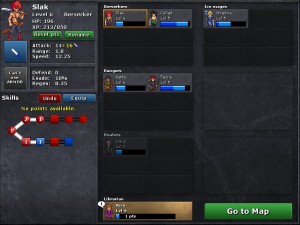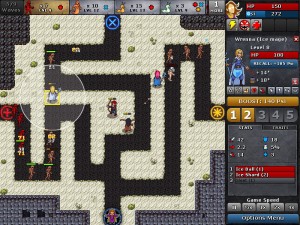It always seems that I’m behind when it comes to finding great games to play and for today’s game, I’m just about two years late. Thanks to a recent sale I decided to pick up Defender’s Quest and I’m glad I did as it features a great combination of two seldom together genres.
Tactical Tower Defense:
Defender’s Quest is a combination of RPG progression and tower defense mechanics. The story takes place in a world that is being inflicted with a plague that can transform the dead into monsters.
The main character after showing signs of infection is thrown into a pit outside of her home where she is miraculously cured and discovers that she has the power to fight the creatures. From there, she is pursued by forces while trying to figure out what’s going on.
Each stage of the game takes place on a tower defense map but you’re not building structures in Defender’s Quest. Instead, your party of allies is summoned to the field using psi points and act as your towers. Each person belongs to a class that determines their abilities and what weapons and armor they can use which you can buy in towns on the main map.
Completing battles will reward you with experience and scrap which is the game’s currency. As your party levels up, you can apply skill points to their respective trees to affect how they perform during battle. Besides summoning units, the main character can cast spells to either help the party or do damage to any stragglers.
The enemy design features the usual suspects of the tower defense genre: Fast enemies, slow strong ones, those that can attack and so on. As an added twist, you can boost your summoned party members using psi which in turn unlocks the use of additional abilities. This becomes important as the average level of the enemies will go up as a stage progresses and you’ll need the extra firepower to take them out.

Improving your party members is a major part of how well you can survive the matches and take on the higher difficulty levels.
Besides the combination of mechanics, one system I really enjoyed was the difficulty levels which is something we normally don’t say about tower defense games.
Every battle past the beginning set can be played at one of four difficulties: ranging from casual to extreme. The difficulty level determines how many waves of enemies you’ll fight, their levels and what enemy types there are.
For each difficulty level, you’ll receive one reward for beating it and another one for getting through it without any enemies reaching the main character. This is a great way to earn extra experience or get better gear early on without having to grind the same battle over and over again. The added difficulty scales with the harder stages, so it would be easier to try extreme difficulty on one of the first stages of the game as opposed to advanced further along.
Defender’s Quest is similar to Card Hunter (which I know Defender’s Quest was first) both in what I liked about it and where I have a few nitpicks over the design. Defender’s Quest isn’t a pure RPG or tower defense game and features and ignores mechanics of both. This in turn could annoy the hardcore fans of either genre.
On the RPG side, the skill trees and equipment are pretty basic. Equipment only comes in the form of direct upgrades and no special gear or unique properties. There are only six classes not counting the main character so there wasn’t the variety of strategies that you would see in other tower defense games.
Tower defense fans may not like how you can’t block paths which is a mainstay of the genre. And the Meta game of having to level up and find gear for your “towers” means that strategy does take a backseat to the RPG side of the game. There were several times where I had the best possible placement for my party but they just weren’t doing the damage needed due to lack of gear or not leveled enough.
However, if you go back to the earlier stages on the harder difficulties, you can earn the extra experience and gear needed to go back and beat those later levels. But it can still be frustrating for people used to traditional tower defense games to have their strategy not work due to gear.

Defender’s Quest requires a different set of strategies compared to traditional tower defense games.
Another aspect of Defender’s Quest that is different from tower defense games is that you’ll have to move characters around the map by taking them off and putting them back down again.
This becomes an important strategy in the later levels when different enemy types will come down the various paths requiring you to adjust your character placement.
Lastly, looking at screenshots of the game, the art style was not a good representation of the game. While the stages themselves used an 8-bit style, the cut scenes before and after use a very flat 2D look that wasn’t that appealing. Characters don’t animate and just stills of the characters are used to try and convey the body language that the text was supposed to give off.
But it looks like the developers realized that the art style was distracting and are updating it for the planned sequel.
There’s always a risk when combining game genres as you may create a game that instead of appealing to both groups, appeals to neither. But Defender’s Quest manages to work and I hope that their sequel will take things further.


